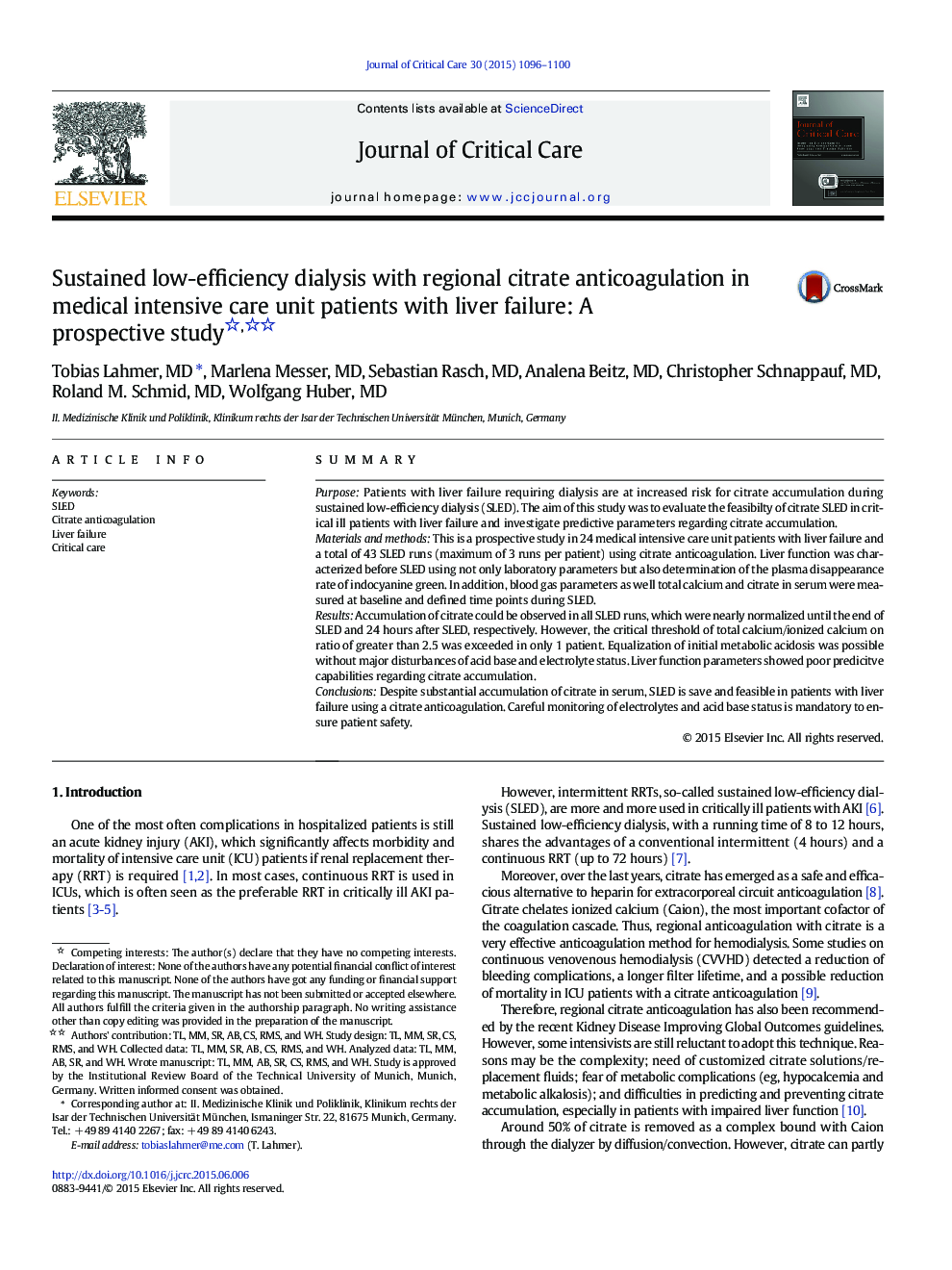| Article ID | Journal | Published Year | Pages | File Type |
|---|---|---|---|---|
| 5885396 | Journal of Critical Care | 2015 | 5 Pages |
SummaryPurposePatients with liver failure requiring dialysis are at increased risk for citrate accumulation during sustained low-efficiency dialysis (SLED). The aim of this study was to evaluate the feasibilty of citrate SLED in critical ill patients with liver failure and investigate predictive parameters regarding citrate accumulation.Materials and methodsThis is a prospective study in 24 medical intensive care unit patients with liver failure and a total of 43 SLED runs (maximum of 3 runs per patient) using citrate anticoagulation. Liver function was characterized before SLED using not only laboratory parameters but also determination of the plasma disappearance rate of indocyanine green. In addition, blood gas parameters as well total calcium and citrate in serum were measured at baseline and defined time points during SLED.ResultsAccumulation of citrate could be observed in all SLED runs, which were nearly normalized until the end of SLED and 24 hours after SLED, respectively. However, the critical threshold of total calcium/ionized calcium on ratio of greater than 2.5 was exceeded in only 1 patient. Equalization of initial metabolic acidosis was possible without major disturbances of acid base and electrolyte status. Liver function parameters showed poor predicitve capabilities regarding citrate accumulation.ConclusionsDespite substantial accumulation of citrate in serum, SLED is save and feasible in patients with liver failure using a citrate anticoagulation. Careful monitoring of electrolytes and acid base status is mandatory to ensure patient safety.
